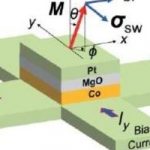QuTech’s Versluis On “How to Engineer a Quantum Computer”

(IEEESpectrum) Richard Versluis is the system architect at QuTech, a quantum-computing collaboration between Delft University of Technology and the Netherlands Organization for Applied Scientific Research has written this comprehensive, extensive discussion of how to engineer a quantum computer.
(NOTE: The upcoming Inside Quantum Technology event in NYC July 8-9 is jointly organized by QuTech & 3DR Holdings.)
Versluis explains in a metaphor instantly recognizable. “Controlling a quantum computer is a lot like solving a Rubik’s Cube blindfolded: The initial state is well known, and there is a limited set of basic elements (qubits) that can be manipulated by a simple set of rules—rotations of the vector that represents the quantum state.” But observing the system during those manipulations comes with a severe penalty: If you take a look too soon, the computation will fail. That’s because you are allowed to view only the machine’s final state.
It will be quite an engineering challenge to control a quantum computer and to make sure that its state will not be affected by various sources of error. However, the difficulty does not lie in its complex quantum state but in making sure that the basic set of control signals do what they should do and that the qubits behave as you expect them to.
My colleagues and I at QuTech in the Netherlands have found that the functions needed for a quantum computer can naturally be divided into five such groups, conceptually represented by five layers of control. Researchers at IBM, Google, Intel, and elsewhere are following a similar strategy, although other approaches to building a quantum computer are also possible.
In the current pre-prototyping phase of quantum computing, individual qubit control is still unavoidable: It’s required to get the most out of the few qubits that we now have. Soon, though, as the number of qubits available increases, researchers will have to work out systems for multiplexing control signals and the measurements of the qubits.
To prepare for these developments, chip designers, chip-fabrication-process engineers, cryogenic-control specialists, experts in mass data handling, quantum-algorithm developers, and others will need to work together closely.
Such a complex collaboration would benefit from an international quantum-engineering road map.
NOTE: The upcoming Inside Quantum Technology event in NYC July 8-9 is jointly organized by QuTech & 3DR Holdings



















